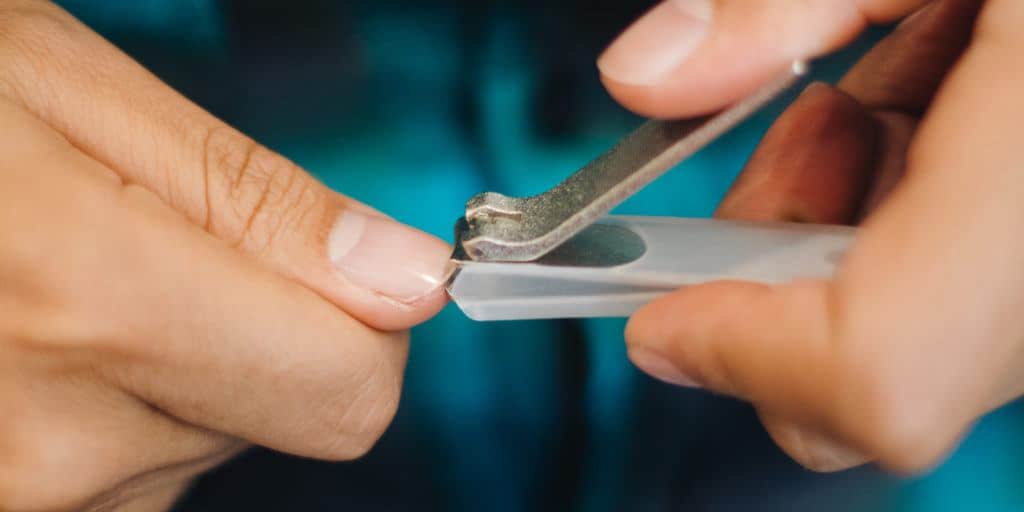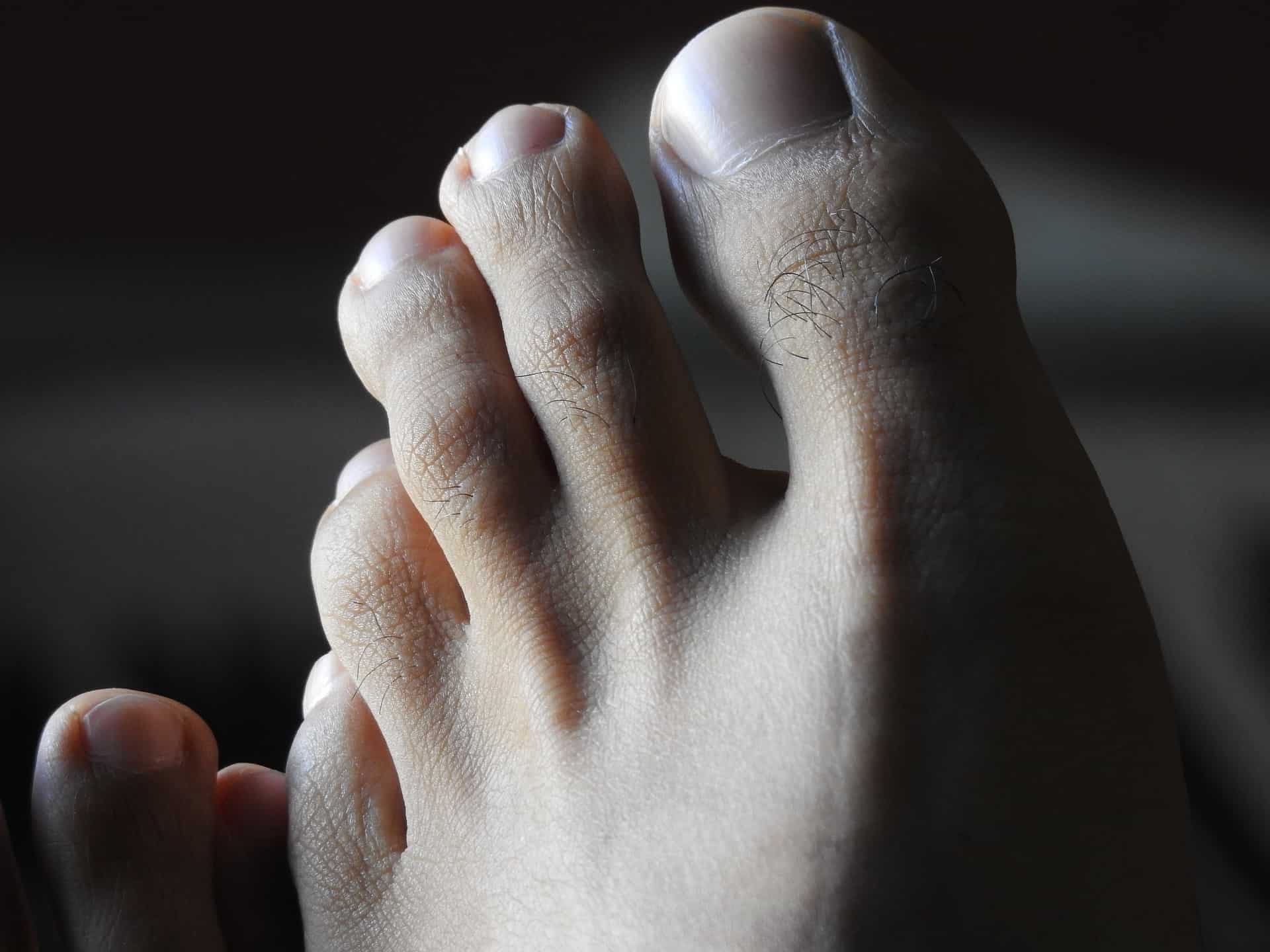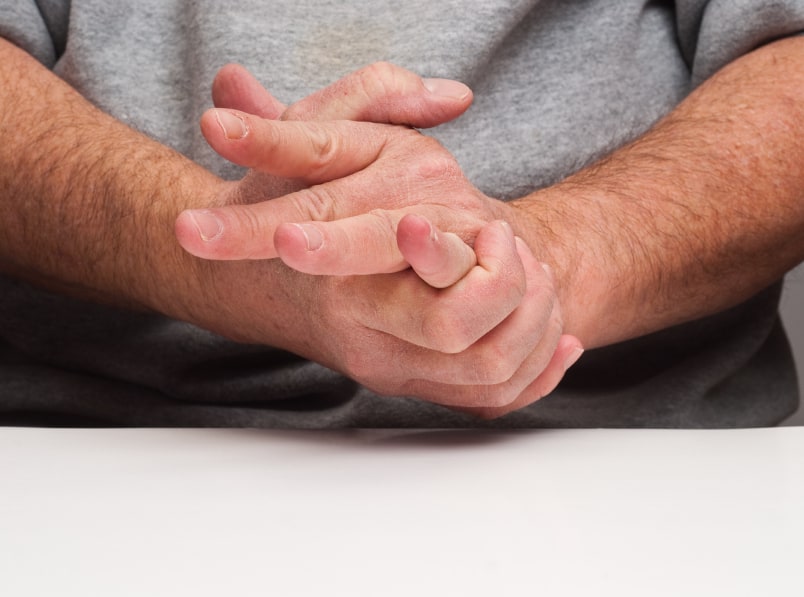What purpose do fingernails and toenails serve? The perennial answer is evolution. Fingernails help us to pick things up and to protect the ends of our fingers. Toenails protect the ends of the toes. Toenails have keratin, which is found in the skin, hair, and fingernails, and the keratin, a protein, keeps nails strong and resilient. But what is the best length for men’s nails? This article comes with a tutorial at the end to instruct about how to properly cut fingernails and toenails.
Table of Contents
How Long Should Men’s Nails Be?
Men spend a lot of time taking care of their bodies, from keeping it clean to prevent infections from shaving off unneeded body hair. But taking good care of the body must include attending to your fingernails and toenails. Fingernails that are too long collect bacteria and dirt more than shorter nails do, so fingernails left untrimmed or cut and lead to the spread of infection.
Keeping nails cut also helps prevent injury to the fingers. What man hasn’t caught a basketball, only to feel the excruciating pain in their fingers from long fingernails digging into their fingers? This can happen with football too and catching any object that is larger than the hands.

Keep the nails trimmed properly will prevent injuries and infection. Nails cut to the right length won’t cause hangnails or broken nails. Nails are designed to protect the fingers, and they’ll only be able to do this properly when they are cut to the right length.
Acceptable nail length resides within a small spectrum. It is best to leave a sliver of the whitish-shaded portion at the top of your nails. This is the space that the nail begins to separate from the skin it is protecting. This comes to about only 1 to 2 millimeters. The nail should only be a shade longer than the fingertips underneath. If it’s much longer than that, it’s time for a trim.
Nails should all be cut to the same length. Men’s fingernails grow faster than women’s nails do, at the rate of 3 to 4 milligrams per month. To avoid split, broken fingernails, be sure to trim your nails once every two weeks.
Why Should Men Keep Their Fingernails Short?
For men, medium to long length fingernails are not very practical. Men do different things with their hands and fingers than women do. Women also have figured out how to use their fingers even though many women grow long fingernails.
Longer fingernails collect dirt very quickly. The air is full of particles that attach to nails. Then, all too often, the nails become black around the edge and look dirty. Black, dirty nails are very unattractive, especially to women; when they first look at a man, they look in his eyes, then his feet and hands. Long, unkempt nails are an immediate turnoff.
Besides, women, whose own nails are often kept longer, look at long nails as a sign of femininity. This may or may not be an issue with some men, and honestly, if a man who prefers longer nails keeps them manicured and attractive, it’s great because he is not neglecting them.

But most men attempt to keep their nails short. Men who perform manual labor (millions of us), or who work in warehouses and lift all day, would benefit from keeping their nails trim and healthy. If an infection develops from dirt getting under long nails. Their work performance will be compromised.
Male office workers and writers who type all day in front of a computer improve word count and commit fewer typing mistakes when they keep their nails short.
Men touch a lot of surfaces, whether in an office or working outdoors, and everyday dirt and particles get under nails. Keeping them short and clean will prevent infection and disease.
As we’ll see in the tutorial that follows, it is much easier to keep shorter nails clean than longer ones.
How Often Should Men Cut Their Fingernails?
How often a man should cut his fingernails depends on what he does with his hands. If a man is a musician, or he’s a mechanic, he’s using his fingers to do detailed work. Men that rely on their hands for precision work should focus on trimming their fingernails, rather than cutting them, because the nails should always remain short, just over the edge of the finger.
Exercise common sense. Nails provide a vital function – protecting the fingers. But you don’t want them to get in the way of doing tasks or playing sports. Men who bowl wouldn’t want to have long nails because the nails on the index, third and 4th fingers will press into the bored holes in the bowling ball.
A pianist will have difficulty playing chords and fast passages if they have long fingernails. The bottom line is that medium to long length nails don’t serve any useful purpose. Short nails give men more options while helping prevent dirt buildup and infection.
Proper Length Of Men’s Toenails
Men should do away with stereotypes about masculinity. There is nothing “feminine” about keeping your nails short, trimmed and healthy. Nothing is less appealing on a male than discolored toenails, toenail fungus or any other aberration that afflicts toenails.

Men’s toenails grow at a rate of .08 -.09 inches a month. Every two months, men should groom, cut and trim their toenails. The length of men’s toenails should be about .04 – .08 inches in length, over the end of the toe. Keeping toenails short helps avoid pain when you stub your toe or kick.
Be careful not to cut your toenails too short, especially on the sides of the toes. This will result in rough edges that will dig into the toenails adjacent to the roughly cut toenails, causing bleeding. Eventually, an infection can result. We will discuss how to trim nails, so the edges are soft in the tutorial that follows.
If toenails are neglected and cut too infrequently, they will curve over the edge of the toe and can become ingrown. When this happens it is a real pain to remove the ingrown toenail, and surgery might be required. Fungal infections can occur, as fungi grow under the curved toenail.
How To Cut Men’s Fingernails and Toenails
Some men may be reading this tutorial and already have overgrown nails, while others have nails that are close to the length and shape they should be. We will discuss how to trim fingernails and toenails first, and then address how to cut overgrown nails afterward.
We’ve already talked about what is the best length for men’s nails. To get to the proper length, keep these important facts in mind.
Tools You Will Need To Cut And Trim Your Fingernails And Toenails.
It’s a great idea to invest in high quality nail grooming tools, especially men, whose nails are harder and tend to grow faster and thicker than women’s nails.
Nail Clippers
Go for clippers that feel heavy in your hand. They should be about three inches in length. The bigger and heavier nail clippers are, the easier time you’ll have cutting your fingernails and toenails. Keep in mind that “Compound lever clippers,” were designed in 1880, and are still the go-to nail clipper. What they do is squeeze the nail between two sharp edges.
Toenail Pliers
Pliers are great to use on toenails because they allow you to approach the nail at an angle and cut the nails most correctly. Pliers are used by medical professionals for a host of purposes including nail cutting. The hands grip the pliers at a further distance from the toenail, allowing for more angled movement.
At about $15.00 for a good pair of stainless steel toenail pliers, your investment will last years and years and help you have healthier toenails.
Stainless Steel Clippers
Stainless steel resists erosion and can be used in the bath or shower. They snap when cutting nails, so you’ll get a nice and even cut when you trim.
Scissor Clippers
Scissor clippers have rounded edges and work especially well on softer nails, even infant nails. But they’re great for grooming and rounding off toenail edges too. They’re not very precise, so it’s best to use them pre-cut, to cut frayed nail edges.
Nail File
This tool gently grinds down the edges of the nail. Nail files also will shape the corners of nails. Manicures and pedicures include using nail files after nails are trimmed with nail clippers.
How To Cut And Trim Your Fingernails And Toenails
Make sure fingernails remain clean and dry
Dry and clean fingernails prevent the buildup of bacteria from populating underneath your nails. And, if your nails are constantly exposed to water, they will crack, resulting in fingernails that are split. If you can, wear gloves that are lined with cotton when working with water or when washing dishes. The cotton absorbs the extra moisture and helps keep your fingers dry.
Soften fingers before cutting
It’s best to trim nails after taking a bath or a shower when the nails become soft and pliable. If you’re unable to do that, soak fingernails and toenails in lukewarm water for five minutes before beginning.
Gather your tools together
Use your toenail clipper for the toenails and nail clippers for fingernails. Nail scissors can be used first to trim rough edges as mentioned earlier. Disinfect your tools first! The proper way to disinfect nail clipping tools is by using a small scrub brush that has been soaked in isopropyl alcohol – also known as rubbing alcohol. Use the sterilized brush on the nail clippers and scissors. After you’ve finished cutting or trimming your nails, rinse your clippers and scissors in hot water thoroughly before putting them away.
Trim your fingernails
Always cut your fingernails straight across the nails. Now, take a nail file and round the nails at the corners. Rounding nails not only keeps nails stronger but it prevents the nails, especially toenails, from tearing or being pulled on by fabric like socks. The fingernails are less likely to get caught on anything while using your fingers either at work or in other activities.
Cut straight across the toenails
Cutting the toenails in a straight line prevents ingrown toenails from occurring, Toenails that are unevenly cut, for example, shorter along the ends and longer in the middle, will often end up curving downward and back towards the feet. This happens especially when men wear tight shoes. Toenails grow more slowly than fingernails, so you won’t need to trim these as often as fingernails.
It is a really good idea to round out the corners of toenails as well as fingernails and to use a nail file when doing it. This is to prevent rough toenail edges from cutting into the skin of an adjoining toe. Too often, bleeding occurs from sharp nails cutting into toes. This can cause pain and the necessity of wearing looser fitting shoes. And you don’t want to get an infection from cuts in the very sensitive skin of the toes.
· Do Not trim your cuticles! Cuticles are located in the bottom edge of the fingers and toes. This area is known as the nail bed. When new nails grow out from the nail root, cuticles help prevent these new nails from becoming infected as they grow out.
The area around the cuticle is delicate. Nail trimming occurs along the “distal edge” of the nail, while the cuticle lies at the other end, inside the lunula and just above the nail fold.
Coming into contact with your cuticles, but cutting or trimming, for example, forces them back into the nail fold. This causes bacteria to enter the cuticle, resulting in possible infection in the new nail growth. When you get a nail infection, it can take months for your nail to regain its normal appearance.
Moisturize the nails after cutting them
This is especially important if you live in a dry climate, where nails are more prone to splitting. It’s a good idea to keep nails (and skin) moist if you live in a desert climate, such as the American Southwest, or the southern plains states. Skin can dry very easily, causing dehydration, and this could be very serious if you don’t drink a lot of fluids.
Drinking a lot of fluids in general, keeps nails hydrated as well, regardless of climate. Staying healthy by always drinking water or other non-sugar hydrating fluids, will keep nails healthy. You may not think nails are as important as skin but remember how often nails come in contact with other surfaces, tools, or computer keyboards each day. Imagine how difficult things would be if one of the nails was infected and any pressure exerted on it causes you to wince in pain.
Things You Should Never Do To Your Fingernails
After cutting and trimming and caring for nails that are the best length for men, it’s important to try to avoid habits that we do without thinking that can damage nails and cause infection – or even worse.
Don’t Bite Your Nails
Quite simply, biting nails or cuticles allows bacteria to enter under the nails. This bacteria comes from saliva in the mouth, which is transferred immediately to the nail bed and under the nails. This bacteria can cause a nail infection, which can be painful and can limit the use of the infected finger. Sometimes a fingertip will feel swollen and painful to the touch. This is an infection, and it’s invisible, so not all infections can be seen.
Fungal infections can be very painful. What’s worse, it takes months of treatment for the nail fungus to go away. Often, medical help is needed to obtain prescription medication to treat the fungus. Being cognizant of your actions and pulling your mouth away from your fingers before biting them, will help you form a healthy habit to keep your nails fit and strong.
Don’t Pull Off Hangnails
If you see a hangnail, you may think it’s only the nail that’s dangling there and pulling it off will get rid of it. The truth is that there is usually live nail tissue in the hangnail and pulling it off can cause pain and will damage the nail.
If you get a hangnail, get a pair of nail scissors and carefully cut in tiny sections (a few centimeters) from the edge of the hanging nail towards the base. But don’t cut the entire hangnail because there is live tissue inside the nail. Go slowly and gently.
Don’t Ignore Problems With Your Nails
If you have a nail problem or you’re feeling pain near your nails, and the problem doesn’t go away on its own, or if the nail problems are associated with other medical conditions, make sure to see your doctor. In most cases, your dermatologist, who is also a medical doctor, will be able to look at the nails and determine the best way to address the condition.

